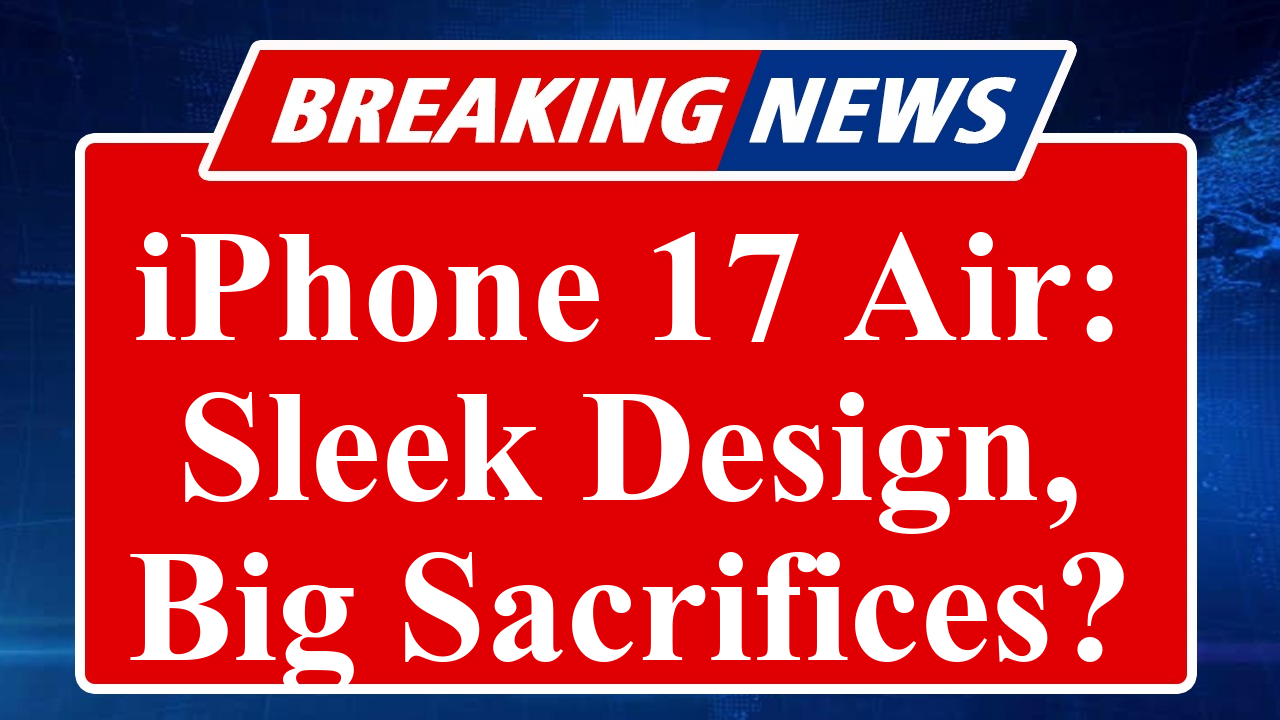“Apple’s iPhone 17 Air, set to launch in September 2025, promises a groundbreaking 5.5mm ultra-thin design but raises concerns with compromises like a single rear camera, reduced battery size, and no physical SIM slot. While boasting an A19 chip and 12GB RAM, its lack of ProMotion and limited 5G support may deter some buyers. Will its sleek form factor justify the sacrifices?”
Apple’s iPhone 17 Air: A Sleek Design with Notable Sacrifices
Apple is gearing up for its much-anticipated iPhone 17 series launch in September 2025, with the iPhone 17 Air stealing the spotlight as the company’s slimmest smartphone yet. Rumored to measure just 5.5mm thick, this ultra-thin device is poised to redefine minimalist design, drawing comparisons to the MacBook Air’s portability-driven ethos. However, leaks and insider reports suggest that achieving this sleek profile comes at the cost of significant compromises, sparking debates among tech enthusiasts and potential buyers.
The iPhone 17 Air is expected to feature a 6.6-inch OLED display with a resolution of 1260 x 2736, as hinted by code found in the iOS 26 beta. Unlike its Pro counterparts, the Air may not support ProMotion’s 120Hz refresh rate, potentially leading to less fluid scrolling and animations—a noticeable downgrade for users accustomed to the smoother displays of premium models. This omission could be a dealbreaker for those upgrading from Pro models, as noted by tech analysts on platforms like X.
Photography enthusiasts may also find the iPhone 17 Air’s camera setup underwhelming. Leaks indicate it will sport a single 48MP rear camera, a significant step down from the triple-camera systems on the iPhone 17 Pro and Pro Max. The front camera, however, is rumored to receive a boost, upgrading to a 24MP sensor for improved selfies and video calls. The camera module’s design is also set for a refresh, with a horizontal, pill-shaped camera bar and a flash positioned to the right, as per reports from The Financial Express.
Performance-wise, the iPhone 17 Air is expected to be powered by the A19 chip, paired with 12GB of RAM to support Apple Intelligence features and multitasking. This marks an upgrade over the 8GB RAM rumored for earlier prototypes, aligning it closer to the Pro models in processing power. However, the ultra-slim chassis may necessitate a smaller battery, with leaks suggesting a 3220mAh capacity. While Apple’s hardware-software optimization could ensure decent battery life, it may not match the endurance of thicker models like the iPhone 17 Pro Max, which is rumored to boast a 5000mAh battery.
Another bold move is Apple’s potential shift to a portless design, eliminating the USB-C port in favor of wireless MagSafe charging. This aligns with the company’s push toward a fully wireless ecosystem but raises concerns about practicality, especially in regions like Europe, where USB-C compliance is mandated. Leaks suggest Apple may navigate this by offering wireless-only charging, though an off-center USB-C port has also been mentioned in some reports, creating uncertainty.
The iPhone 17 Air’s design compromises extend to connectivity and audio. Posts on X indicate the device may lack mmWave 5G support and feature only one speaker, reducing audio output compared to other models. The absence of a physical SIM card slot, with reliance on eSIM globally, could also pose challenges for users in areas with limited eSIM support.
Pricing remains a critical factor. Early leaks suggest the iPhone 17 Air could start at Rs 99,900, positioning it between the standard iPhone 17 (Rs 89,900) and the Pro models. However, potential price hikes due to supply chain shifts and a rumored 25% import tariff on non-US-made iPhones could push costs higher, as noted by Hardware Busters.
The iPhone 17 Air’s design also includes subtle changes, such as a repositioned front camera to the left of the Dynamic Island to accommodate the slim chassis and Face ID module. This shift, detailed by leaker Majin Bu on X, could pave the way for a more compact Dynamic Island in future models. Additionally, the use of aluminum frames instead of titanium, as reported by Hardware Busters, may reduce weight but could be perceived as a downgrade from the premium materials of the iPhone 16 Pro series.
As the September launch approaches, the iPhone 17 Air’s promise of a sleek, lightweight form factor is undeniable, but its compromises—fewer cameras, no ProMotion, and potential battery and connectivity limitations—raise questions about its value proposition. Will Apple’s focus on minimalism resonate with consumers, or will the trade-offs make the Air a tough sell compared to the more feature-rich Pro models? Only time will tell if this bold design gamble pays off.
Disclaimer: This article is based on rumors, leaks, and reports from sources like The Financial Express, MacRumors, Hardware Busters, and posts on X. Information is subject to change, as Apple has not officially confirmed details about the iPhone 17 Air.

